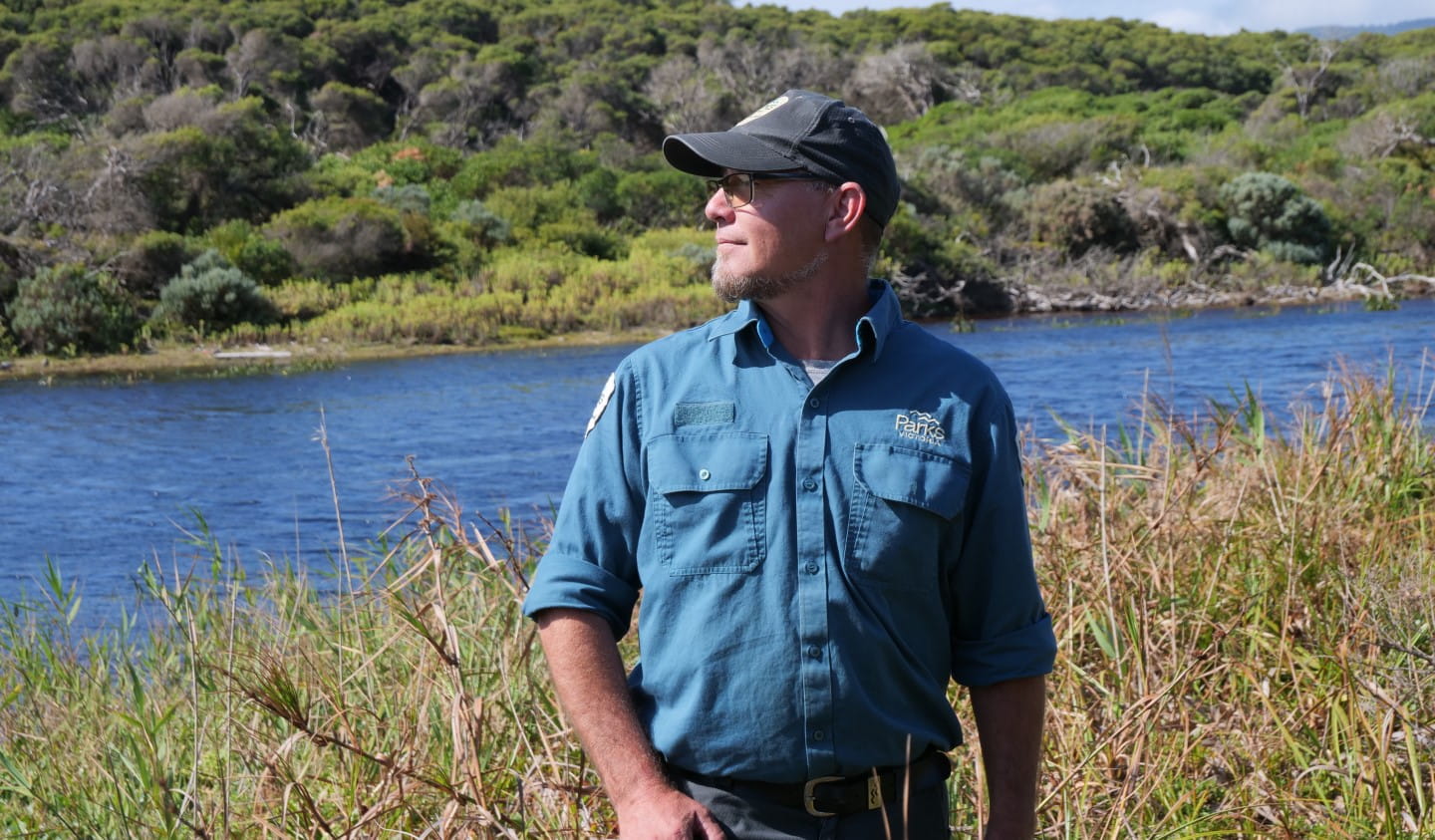Overview
- In the second podcast episode of Closer to Nature, we talk with Clinton Morton, Project Officer Traditional Owner Partnerships, about Parks Victoria's role in preserving Aboriginal cultural heritage across the state.
- Closer to Nature is a new podcast by Parks Victoria, about how the climate crisis is unfolding across Victoria.
Subscribe to Closer to Nature wherever you get your podcasts.
What is Parks Victoria's role in protecting cultural heritage?
The sun is beating down, a gentle breeze rustles through the coastal heath, and, in the distance, the sound of an icy Bass Strait wave crashes onto an empty beach. It's a perfect day here in Wilsons Promontory National Park.
For episode 2 of Closer to Nature, we're joined by Clinton Morton, Project Officer Traditional Owner Partnerships, to discuss Parks Victoria's role in protecting and conserving important elements of traditional cultural heritage across the state.

Photo: Clinton Morton, Project Officer Traditional Owner Partnerships at Parks Victoria, looks out across Darby River at Wilsons Promontory National Park.
"We're currently at Darby River, a catchment area for the Prom, which catches somewhere between 60 and 70 percent of the rainfall that hits Wilsons Prom itself, otherwise known as Yiruk Wamoon. Yiruk is the Gunaikurnai word for the Prom, and Wamoon is the Bunurong-Boonwurrung word for Wilsons Prom," Clinton says.
In Victoria, cultural heritage encompasses all values, both intangible and tangible, of current and past generations of Traditional Owners who've lived on Country for tens of thousands of years. Examples of intangible cultural heritage include customs, traditions, language, knowledge and folklore that has been passed down from generation to generation through the ages by Traditional Owners.
At Parks Victoria, Clinton's role focuses on working with Traditional Owners to protect the tangible cultural heritage assets - those that can be seen and felt - in the landscape.
"(When I talk about) culture and heritage I'm referring to the tangible items, the physical things that are still visible today, whether they be middens, which are generally full of shells (but sometimes contain burials), stone axes, stone tools, scar trees, or rock art," Clinton says.






